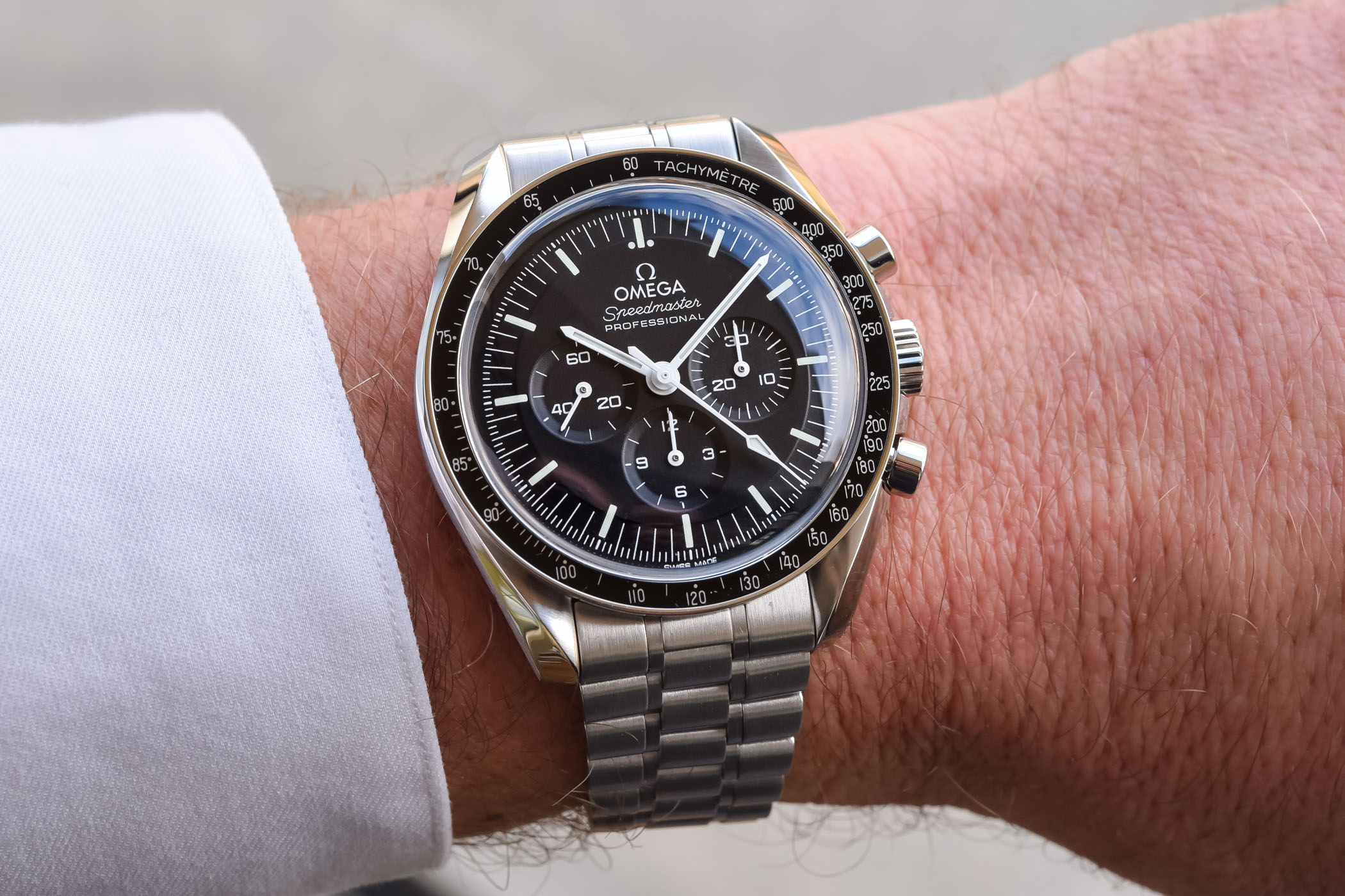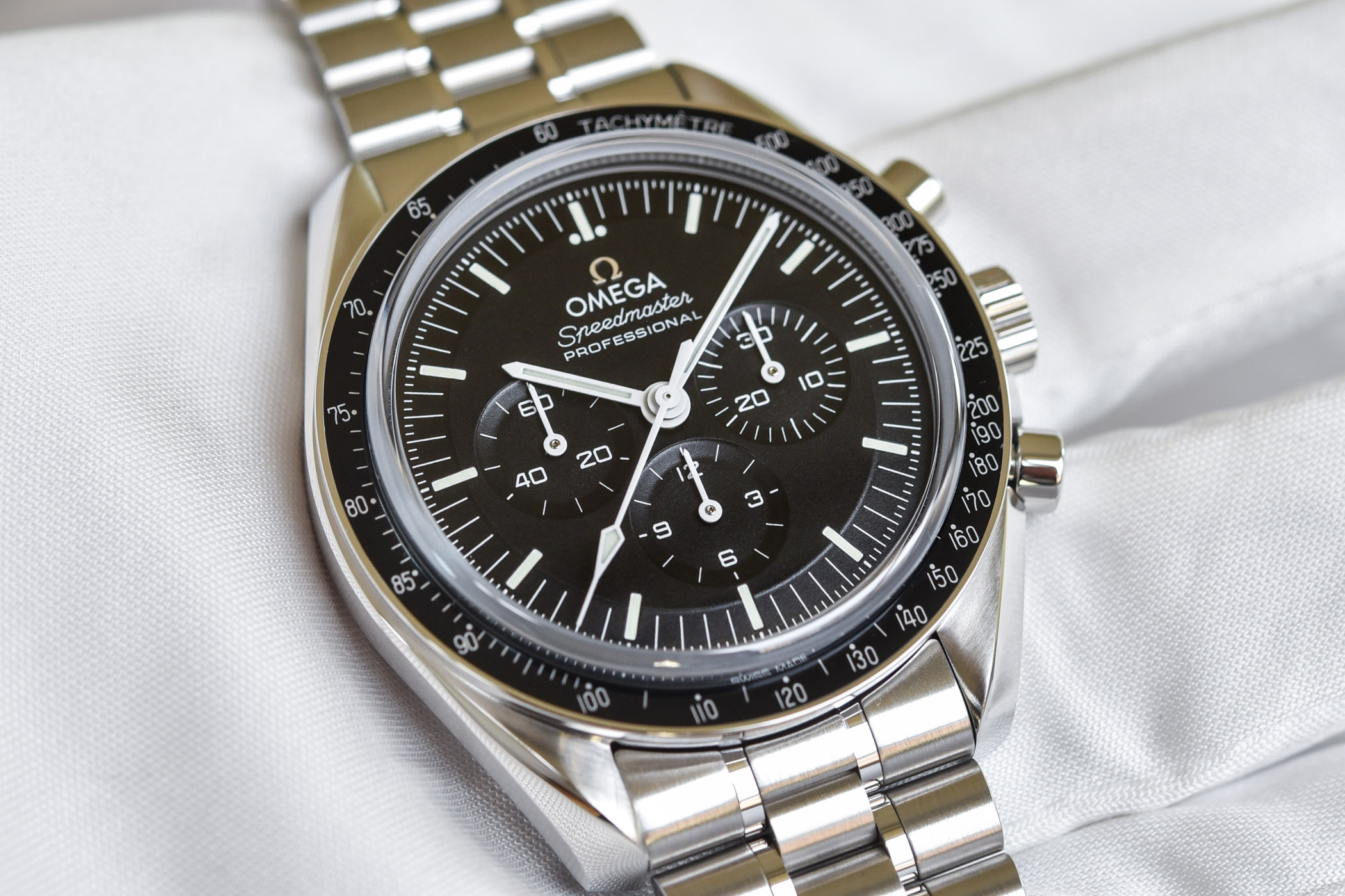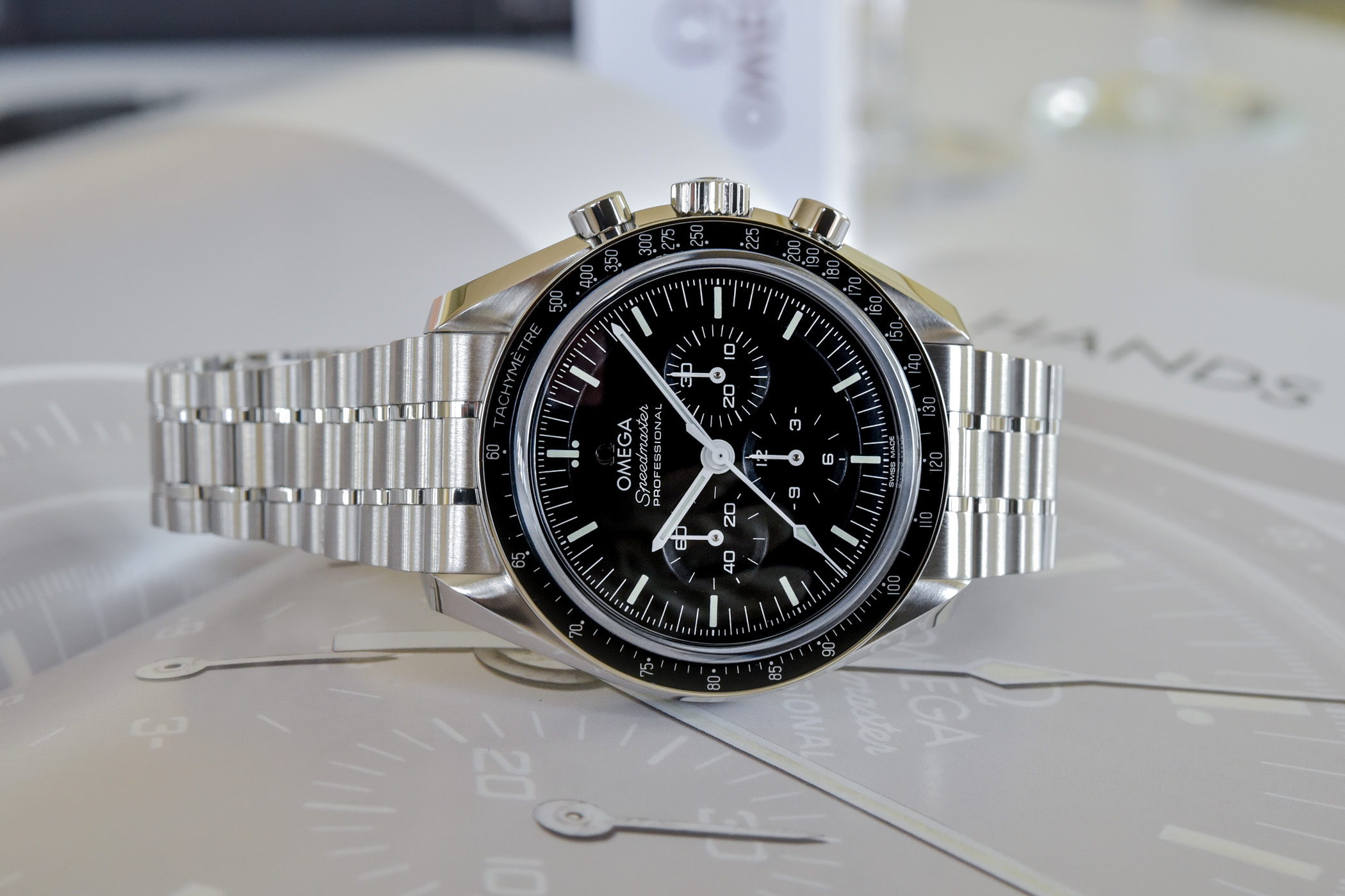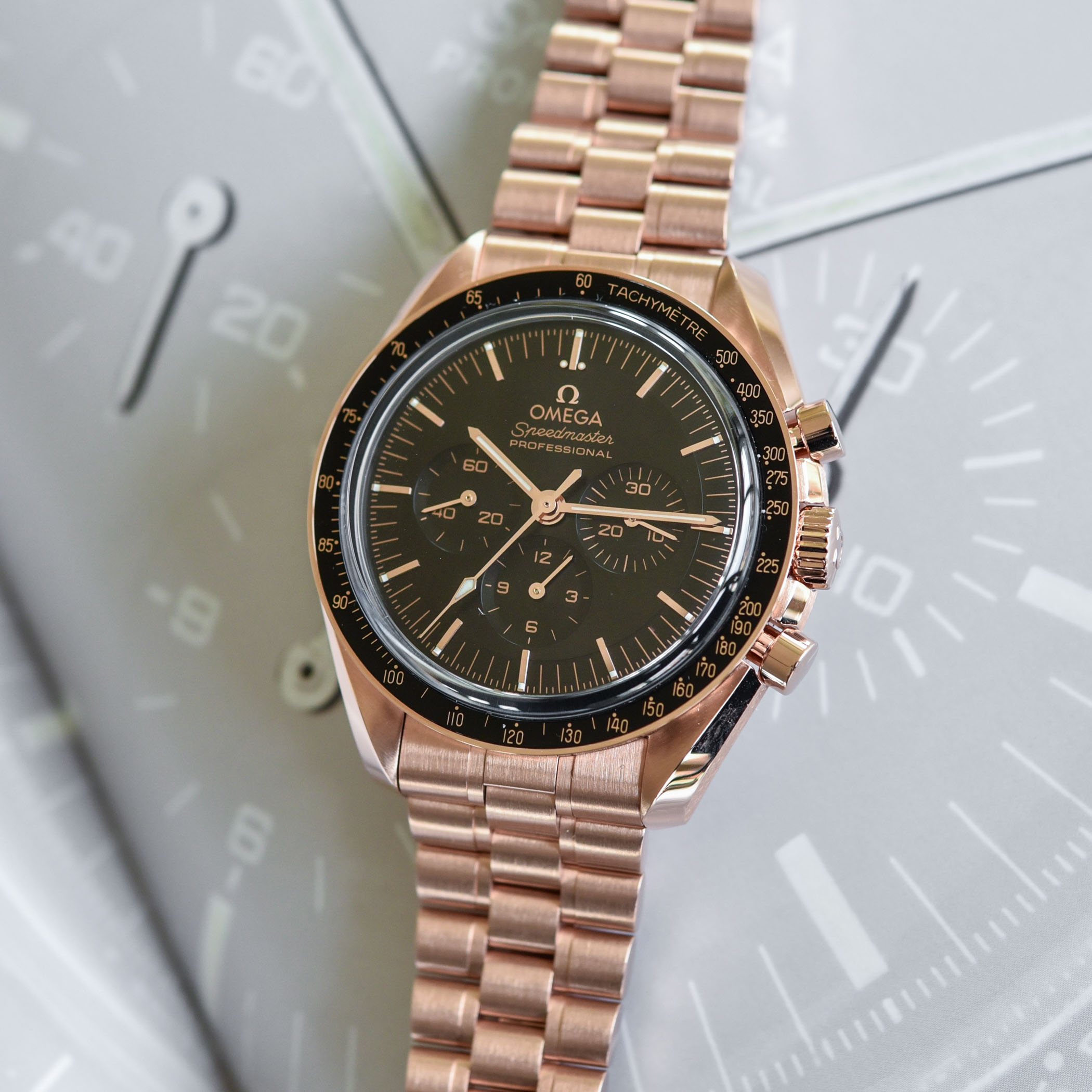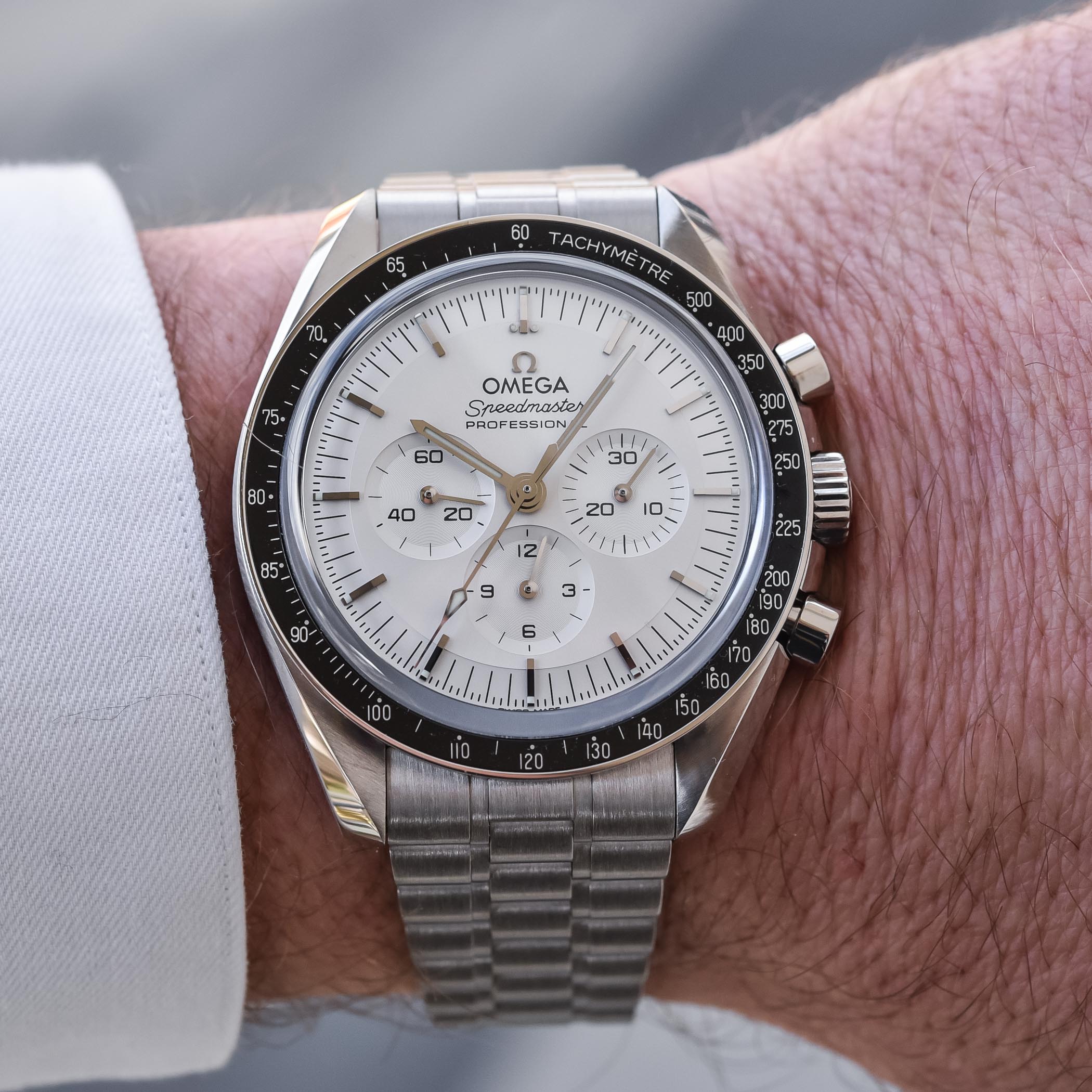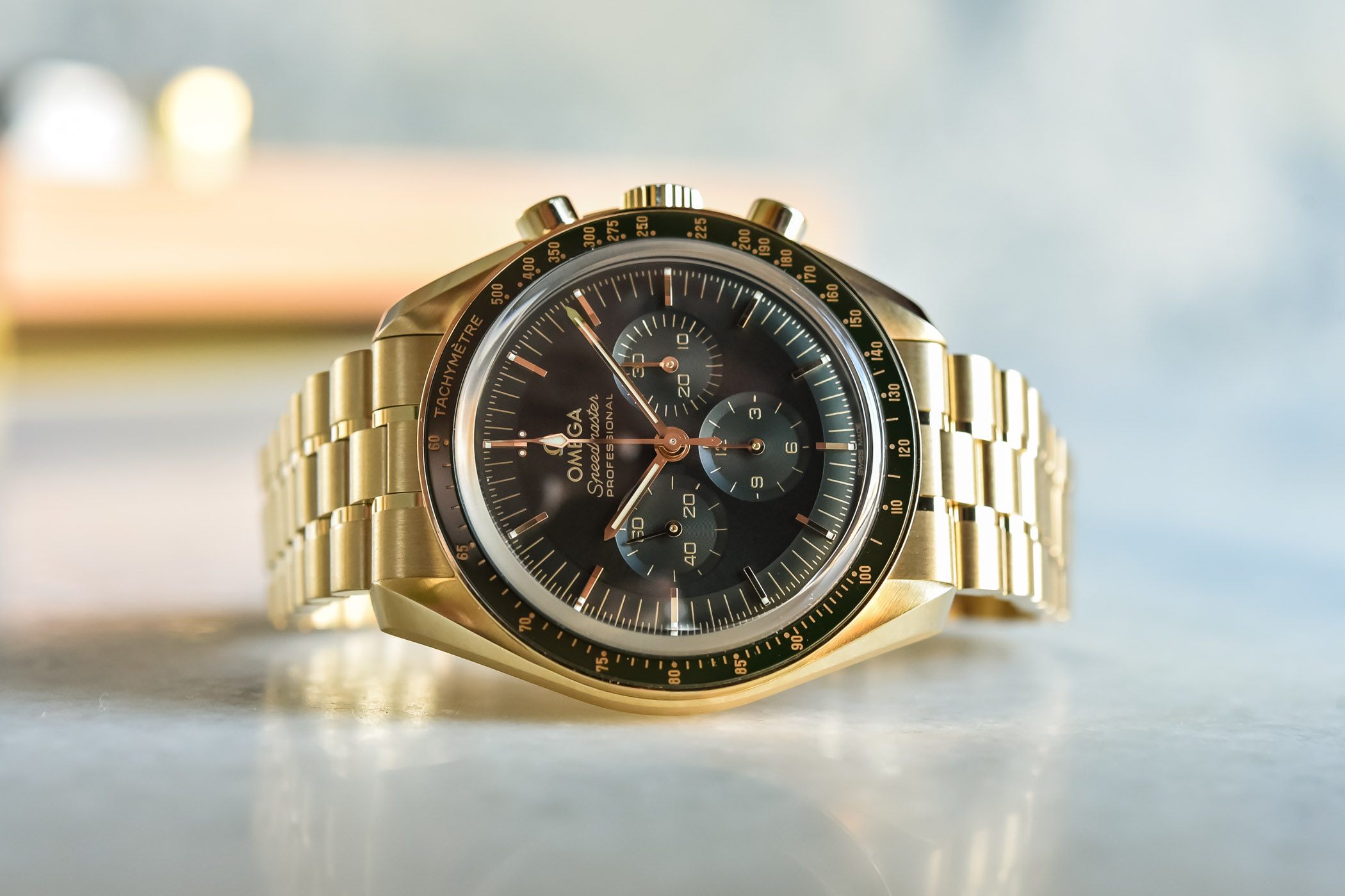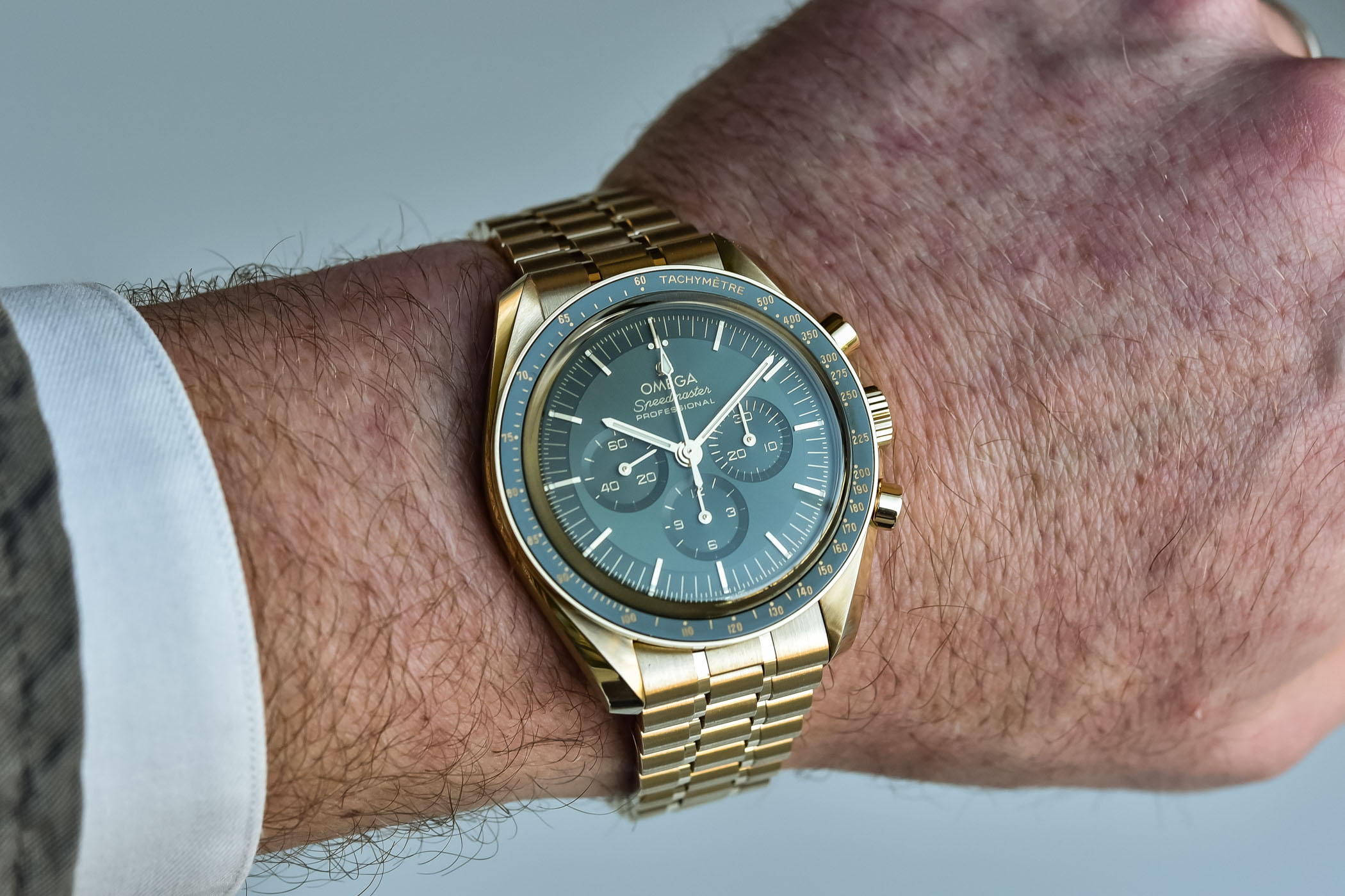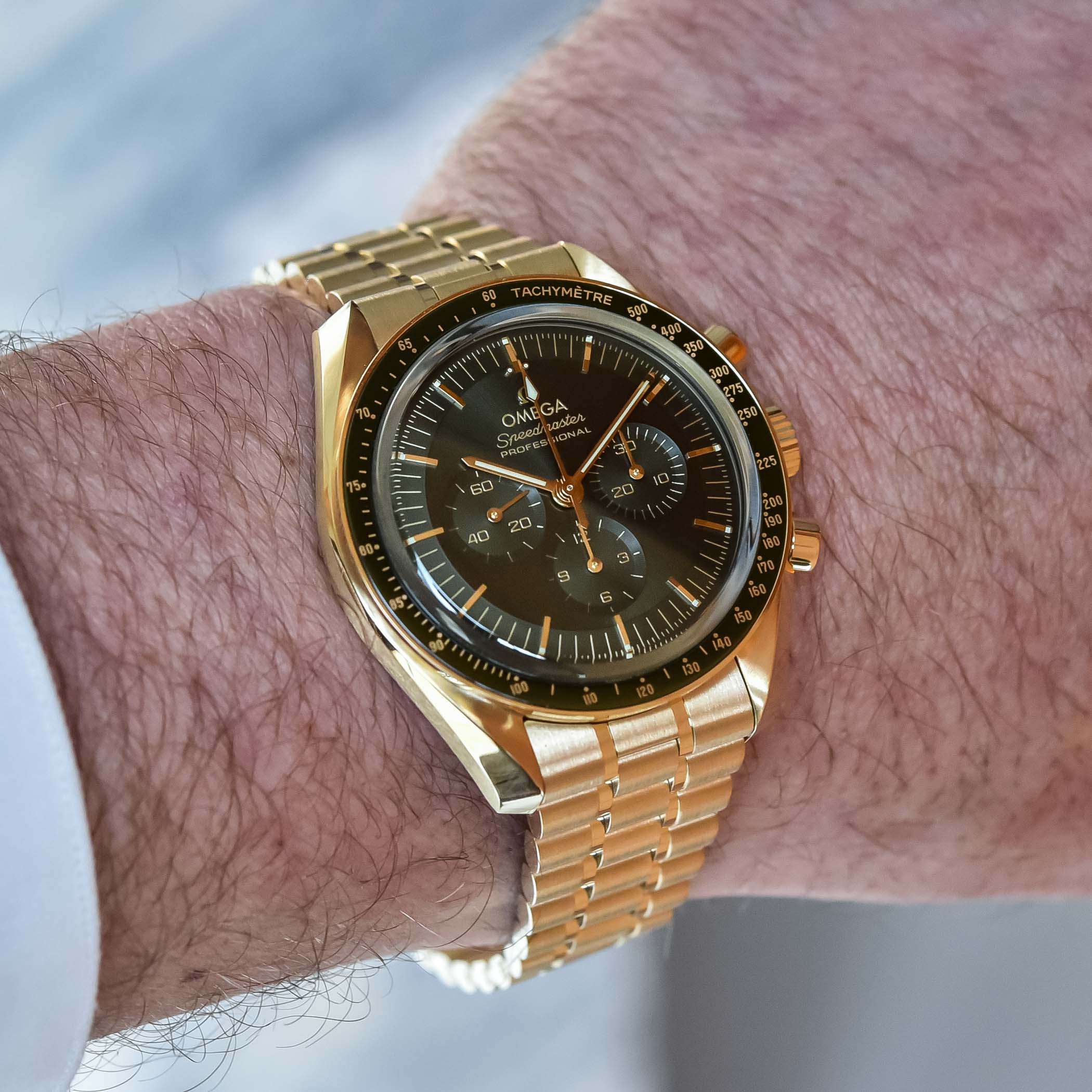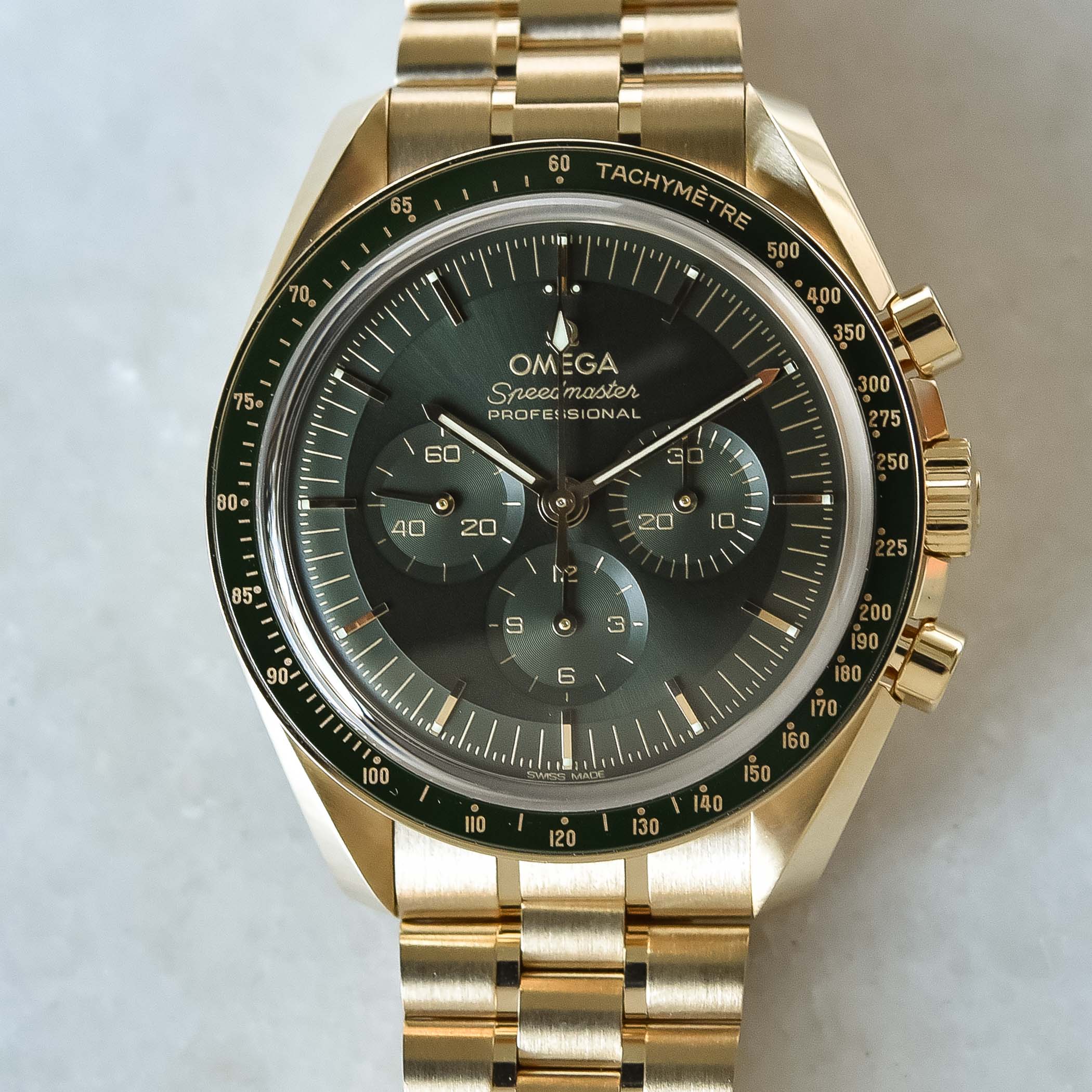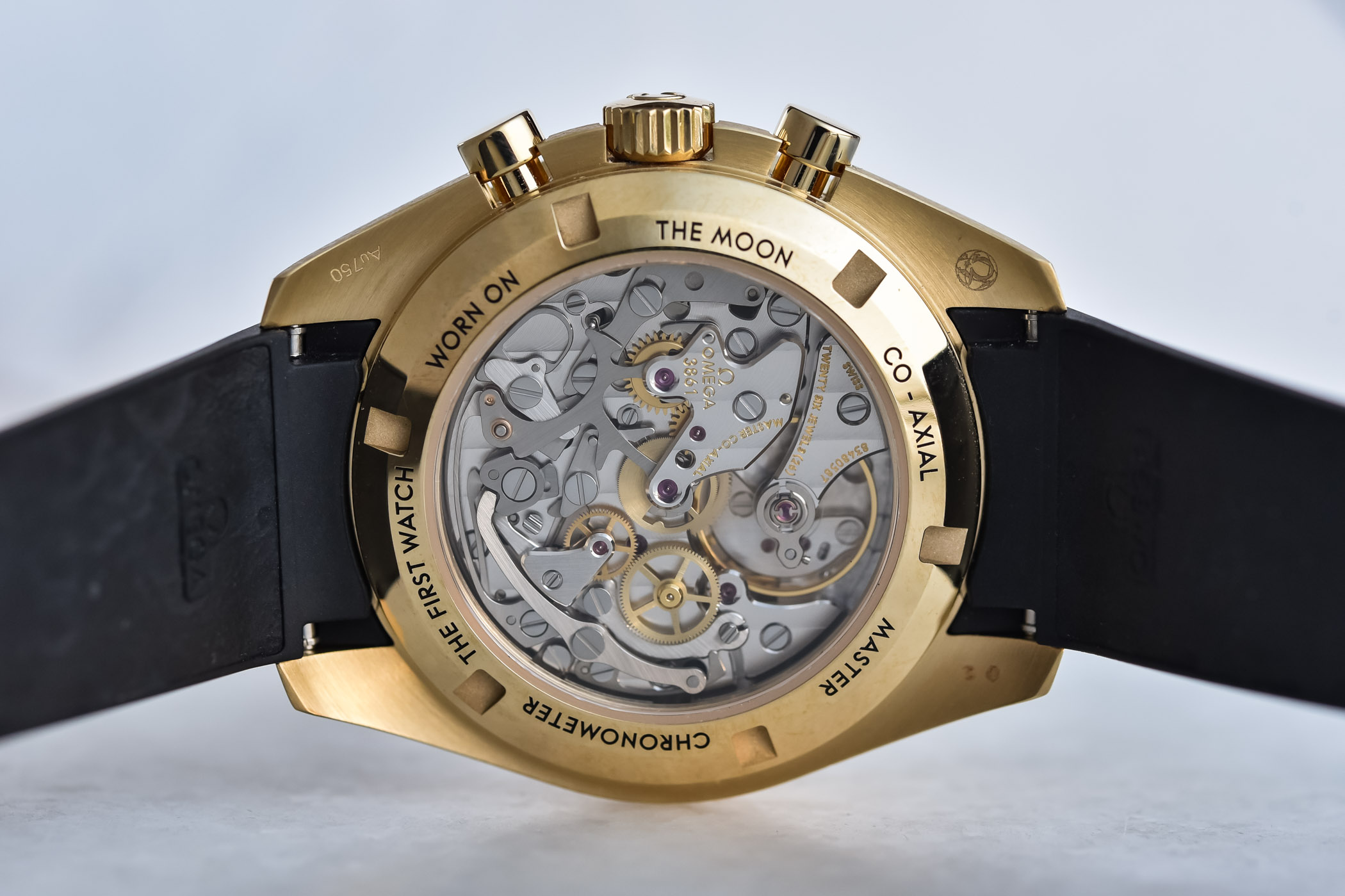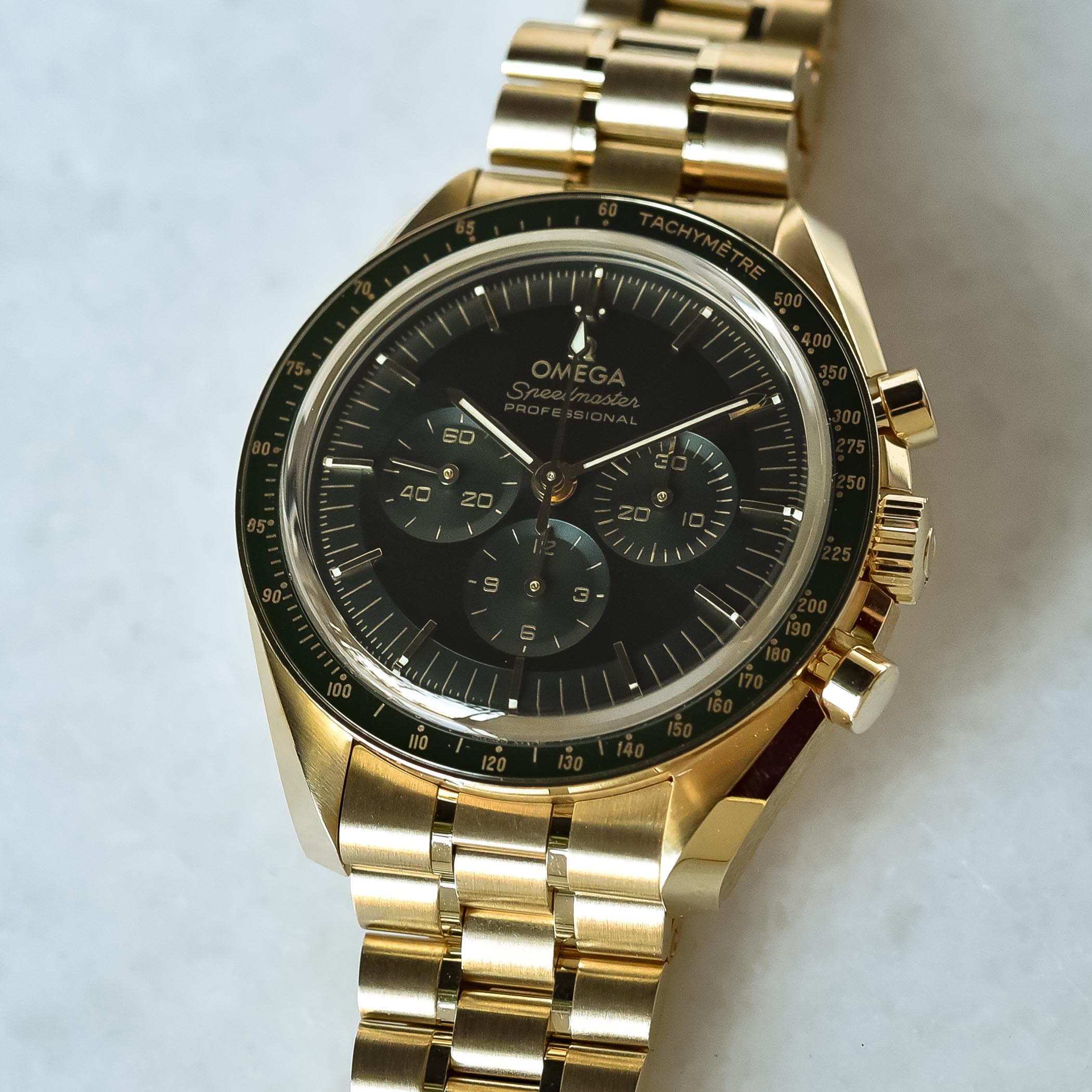The Subtle Bling Of The Omega Speedmaster Moonwatch Moonshine Gold & Green
Omega's legendary space watch glows in a different light...
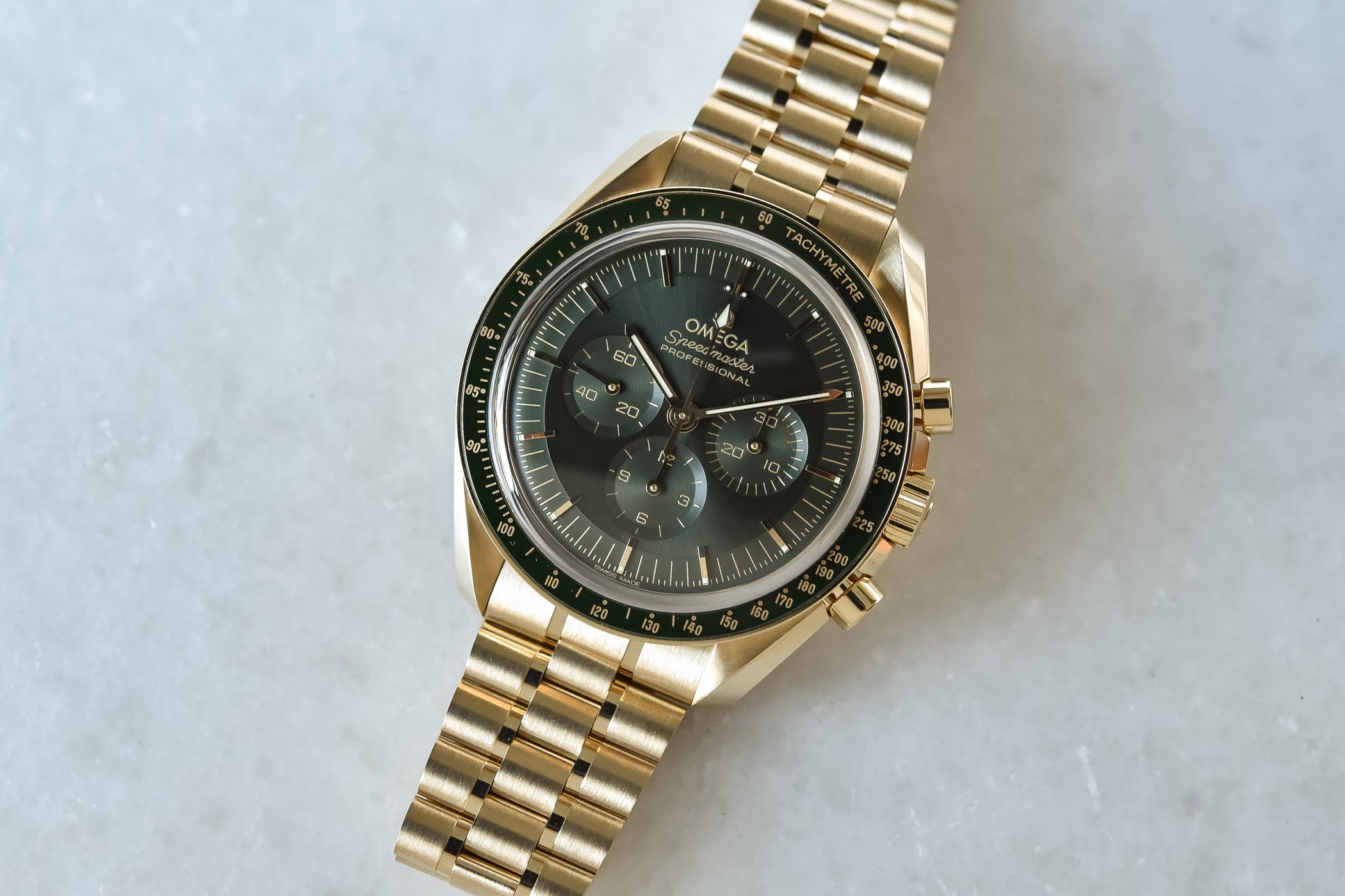
“The Speedmaster Moonwatch should be in stainless steel. Period. This is how NASA wanted it, this is how Omega created it, and this is how it went to the Moon.” This is the type of argument you can imagine hearing from the mouth of strongly opinionated Speedy fans. Fair enough, the Moonwatch is still very much available in this more common material, and it should make them happy enough. What if, on the other hand, you’d like to have the legendary look of the Speedmaster Moonwatch (understand the classic proportions, design and movement) with a touch of luxury, a touch of colour and a (fairly controlled) touch of bling? Well, since 1969, there are some gold editions of the emblematic space chronograph, and the brand continues this legacy with a truly handsome, highly desirable, not-that-bling Speedmaster Moonwatch Moonshine Gold and its cool green dial.

We’ve explored the updated Speedmaster Moonwatch on many occasions already, including an extensive article that tells you just about everything you need to know about the newest generation introduced in 2021. But a small reminder is always useful. Launched in 1957 as the first chronograph wristwatch with a calculation scale positioned outside the watch on an external bezel, the Speedmaster underwent multiple evolutions to reach a familiar look at the end of the 1960s, a time when it also gained incredible fame by being the first watch worn on the Moon.
From 1968/69 up until late 2020, the Speedmaster Moonwatch remained almost identical in shape, proportions and mechanics. Obviously, some updates have been made to materials and manufacturing processes, its movement changed from calibre 861 to calibre 1861 (not much changed), and small tweaks were done here and there. But yes, the Moonwatch remained almost unchanged for half a century. In the meantime, the Speedmaster moved from a stand-alone watch to a full collection, with various sizes, complications, materials, and designs added next to the traditional Moonwatch. But then again, the Moonwatch is the Moonwatch and is kind of irreplaceable.
2021 marked a strong evolution. Not so much in terms of design, at least at first sight. What mattered most was the mechanical side of the watch with the introduction of a new movement with 21st-century technology, including co-axial escapement, Master Chronometer certification, and ultra-high resistance to magnetism. And at the same time, although the watch remained highly familiar in terms of looks, not a single part (almost) of the watch was identical to the previous generation. Of course, the launch collection included four different stainless steel references – strap vs bracelet, sapphire vs hesalite – but also four references in gold – two in Sedna pink alloy and two in Canopus white alloy. Gold isn’t new to the Speedmaster and has been around for far longer than some would like to imagine.
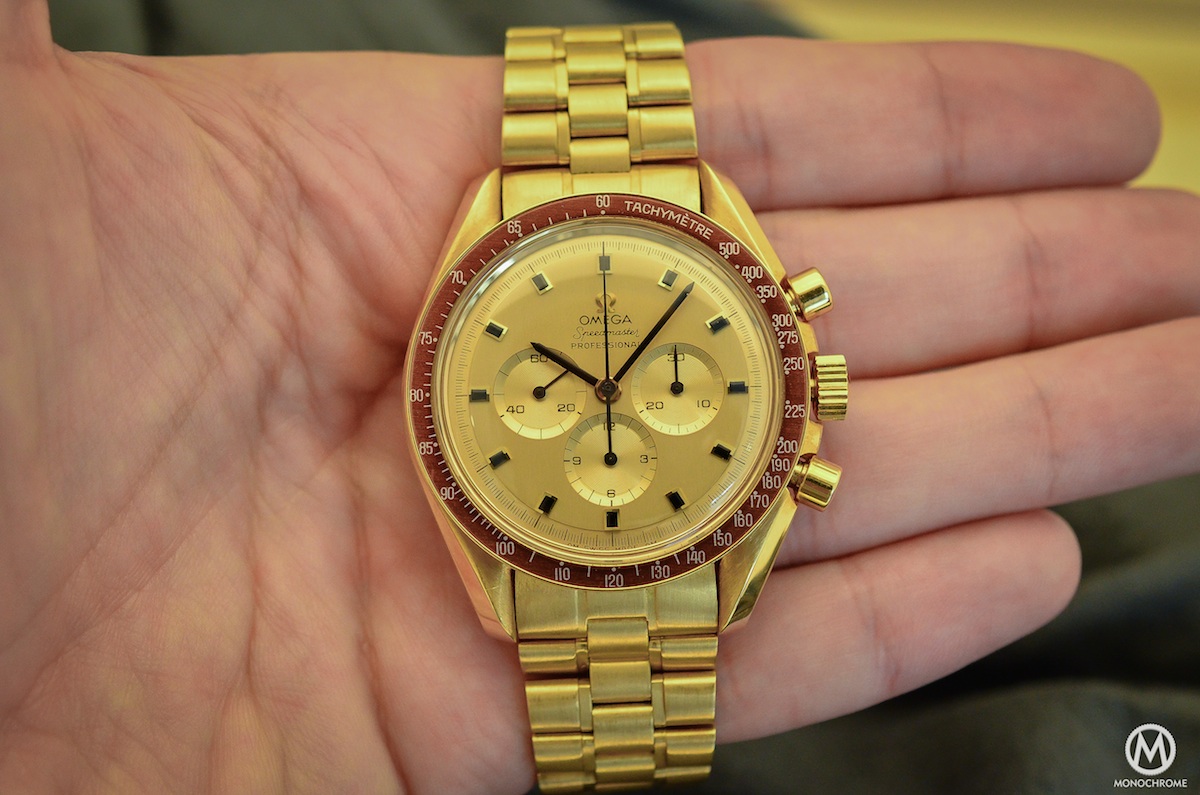
We have to go back in time to late 1969. The first Speedmaster Moonwatch made of gold was a commemorative model. Known as reference BA145.022, this yellow gold watch with matching dial and bracelet and a burgundy-coloured bezel was produced as a celebration of the Moon Landing in 1,014 pieces (including two offered to President Nixon and Vice President Spiro Agnew and some to astronauts). This watch was re-edited in 2019 for the 50th anniversary of the Apollo XI mission. Since then, gold has become an inherent part of the collection, with the 1980 yellow gold (BA345.0802) and white gold (BC345.0802) Apollo XI editions, and from 1999 to 2012, a yellow gold watch as part of the permanent collection, available either on a gold bracelet or leather strap, with a black dial (ref. 145.0052). This was not a special edition, just a gold-clad version of the Moonwatch.
Now, and while the Speedmaster is still mostly a watch made of stainless steel and at a relatively fair price, there are some more luxurious editions made of gold in the permanent collection. And why not? Why Omega shouldn’t give some options to those who want a bit of heft, some warmth and luxury? In this instance, up until this year, you could go for the extremely appealing and discreet white “Canopus” gold model with silver dial – the gold watch that only you know is made of gold (and your banker too) – and a more obvious Sedna gold version with black dial. And yes, apart from some details on the dial and the blatant difference in materials, these watches were still very much Moonwatch models.
Earlier this year, Omega released a new series of gold Speedmaster Moonwatches, this time in its proprietary Moonshine gold alloy. While Canopus replaces traditional white gold, and Sedna replaces classic rose gold, Moonshine gold is there to replace yellow gold. First seen on the Speedmaster Apollo 11 50th Anniversary Limited Edition, it follows the same idea as the two other alloys mentioned above; more resistance to fading, more lustre over time and mostly its own unique colour to stand out from the crowd. Composed of 75% gold mixed with 14.5% of silver, 9% of copper and 1% of palladium, it offers a distinctive and paler hue than traditional 18k yellow gold and tries to replicate the colour of older gold alloys, with less shine and saturation than today’s traditional 18k alloys.
So what’s the result? Well, the Speedmaster Moonwatch Moonshine Gold is first and foremost a Moonwatch, with everything that implies. It looks and feels like one, wears like (apart from the weight, of course) and operates like one. Except it has a far warmer colour but not much bling and shine – which, in my very-steel-oriented mind, is a very, very good point. Surely, this watch has a golden touch, but not one that screams luxury and expensive. It’s actually rather discreet and refined and doesn’t betray the original spirit of the Speedy too much. The profusion of brushed surfaces, with the exception of the casebands, crown/pushers and mid-links (that’s new, they were brushed on the Sedna and Canopus – and it does make sense to see this evolution), also tone down the lustre of the gold alloy.
Specifications are all identical to the steel model: diameter 42mm; height 13.18mm; and lug-to-lug, a fairly compact 47.5mm. Shape? A back-to-basics with some references to vintage models. The Moonshine Gold Speedmaster is available in two editions. There’s a gold-panda version, with a solid gold dial and black counters. And there’s the one we have here, which adds a bit of colour while keeping the classic dark-toned dial of the original model. And it’s a soft, discreet tone of green that has been chosen by Omega to go along with this pale gold alloy. And it works very well in the metal, only giving a subtle indication of colour, not a full-frontal slap of green. This watch is, relatively speaking, all about pale hues, and it’s a very pleasant choice.
Green is used here on the dial and bezel. The latter is made of polished green ceramic with the tachymeter scale obtained via the Ceragold process. The scale is the classic, vintage-oriented DOT. As a precious metal model, the dial is sunray-brushed but retains the classic stepped profile with applied markers and logos. Tone-on-tone subdials are also present, and all the scales, logos and markings are done in Moonshine gold colour. There is a bit less contrast than on a classic Steel Moonwatch, which features white hands and markers, but it’s still very decent and operational.
Underneath the dial is the recently launched calibre 3861, which was a major milestone in the life of the Speedmaster. Indeed, it was the first time this legendary chronograph was Master-Chronometer-rated and equipped with a Co-Axial escapement. A silicon escapement and free-sprung balance wheel are also part of the package, and so is its impressive resistance to high magnetic fields. Other than that, it’s also a movement that is very much part of the watch’s DNA, with its overall architecture based on the 861 and 1861, including the cam-level chronograph system. The decoration includes Geneva waves and circular graining, satin-finished surfaces and polished bevelled edges. And it’s all visible under the sapphire caseback – because all precious metal models are so-called sapphire sandwiches.
There are two different editions of the Green/Moonshine Gold Speedmaster Moonwatch. The first one is worn on a brushed-polished bracelet with a folding clasp, which includes a comfort release. It retails for EUR 42,100. The second comes equipped with a green alligator strap closed by a gold pin buckle, which retails for EUR 29,900.
Personally, I really like this Moonwatch Moonshine Gold, specifically on the matching bracelet. I know it’s not a watch for the masses, and not only because of its price. The Speedmaster is first and foremost a watch to consider in stainless steel, simply because it’s more relevant, more in line with its vocation, and more accurate regarding its history. And it’s alright since this is the core model in the collection. But for a change, for someone who loves Speedmasters and has multiple iterations already, or for someone who just wants to go high-end, there’s truly something special about this version. It’s not over the top, it retains a certain discretion (something inherent to the Speedy), and the tones used by Omega are just spot on! The Moonshine alloy has a unique vibe, and the green of the dial is surely a great match too.
For more details, please visit omegawatches.com.

